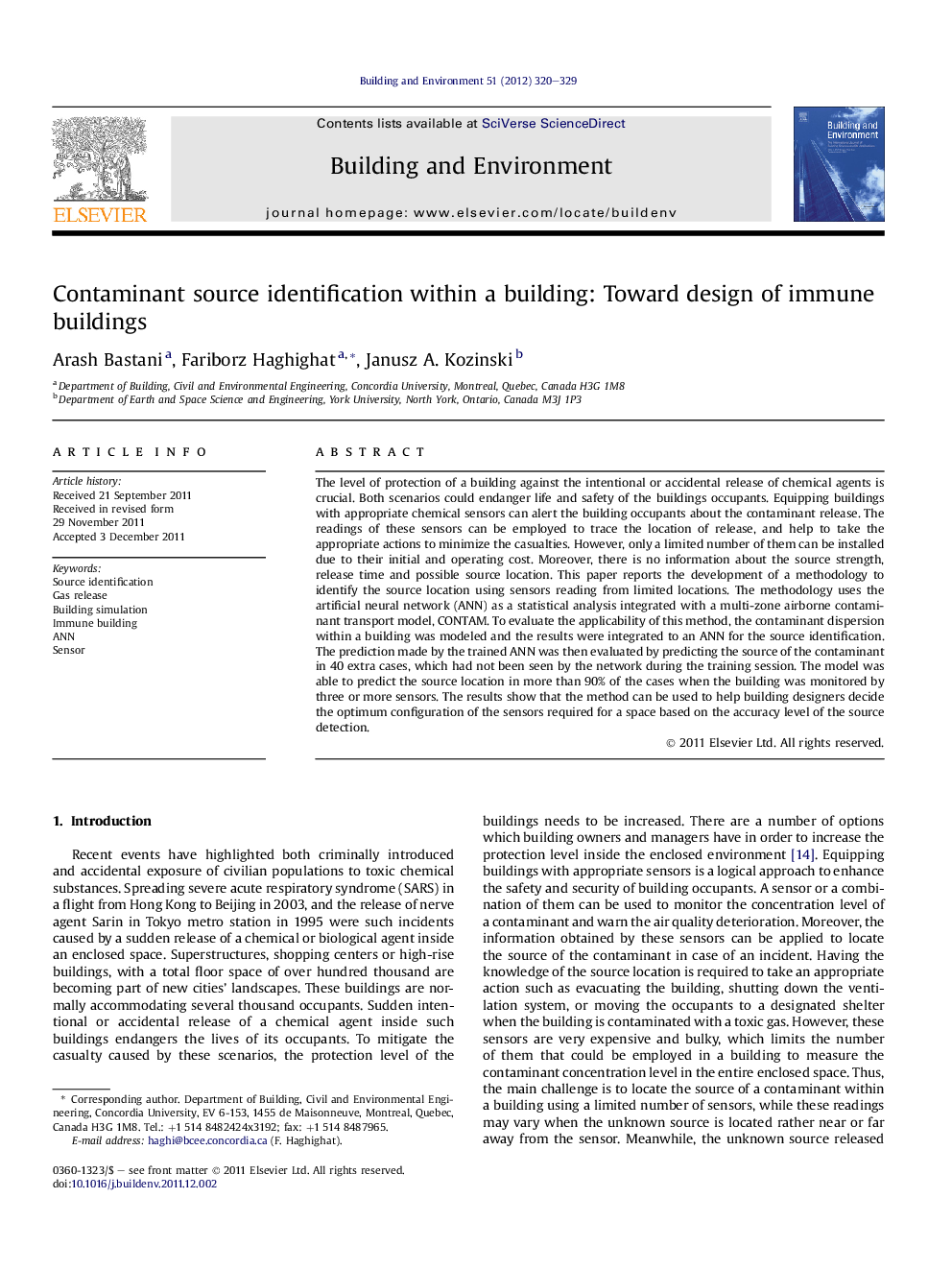| Article ID | Journal | Published Year | Pages | File Type |
|---|---|---|---|---|
| 248486 | Building and Environment | 2012 | 10 Pages |
The level of protection of a building against the intentional or accidental release of chemical agents is crucial. Both scenarios could endanger life and safety of the buildings occupants. Equipping buildings with appropriate chemical sensors can alert the building occupants about the contaminant release. The readings of these sensors can be employed to trace the location of release, and help to take the appropriate actions to minimize the casualties. However, only a limited number of them can be installed due to their initial and operating cost. Moreover, there is no information about the source strength, release time and possible source location. This paper reports the development of a methodology to identify the source location using sensors reading from limited locations. The methodology uses the artificial neural network (ANN) as a statistical analysis integrated with a multi-zone airborne contaminant transport model, CONTAM. To evaluate the applicability of this method, the contaminant dispersion within a building was modeled and the results were integrated to an ANN for the source identification. The prediction made by the trained ANN was then evaluated by predicting the source of the contaminant in 40 extra cases, which had not been seen by the network during the training session. The model was able to predict the source location in more than 90% of the cases when the building was monitored by three or more sensors. The results show that the method can be used to help building designers decide the optimum configuration of the sensors required for a space based on the accuracy level of the source detection.
► Locating a source of contaminant is critical to protect the occupants’ safety. ► CONTAM simulation accompanied with ANN to locate a source of contaminant. ► In more than 90% the source was identified using instant sensors’ readings. ► The source was located with unknown source strength, release time and location. ► The method can help building designers decide the optimum number of sensors.
